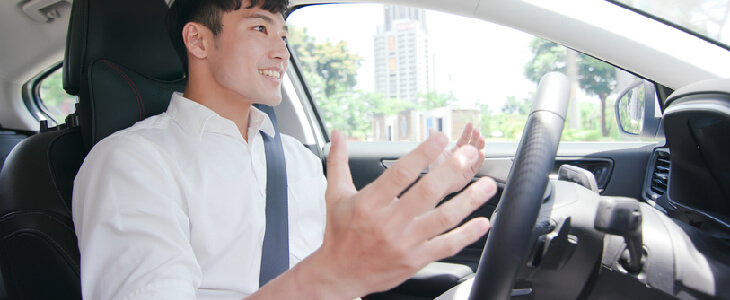If you or a family member has been injured in a Waymo self-driving car accident in California, turn to J&Y Law. Our attorneys are committed to holding Waymo accountable for injuries caused by negligence, autonomous system malfunctions, vehicle defects, and other safety issues.
We have no fear of going up against big tech companies and will get you the maximum compensation you deserve. We have an impressive track record of success, having recovered millions of dollars in damages on behalf of personal injury victims. Contact our office today for a free consultation.
What is Waymo?
Waymo is a self-driving car technology company launched by Google in 2009 and is now a subsidiary of Alphabet, Inc. (the parent company of Google). Waymo has been testing autonomous vehicles in the San Francisco Bay Area and Silicon Valley since 2017. Waymo’s technology includes:
- Cameras
- Sensors
- Artificial intelligence
- Algorithms
In February 2022, the California Public Utilities Commission (CPUC) issued “Drivered Deployment” permits to Waymo and the self-driving unit of General Motors (Cruise ) to allow for passenger service in autonomous vehicles (AVs) with safety drivers present. The term “drivered” refers to AVs with safety drivers present, while vehicles without safety drivers are referred to as “driverless.”
The permits also allow the companies to collect fares from passengers and offer shared rides. Previously, Waymo and Cruise had only been permitted to provide passenger service on a testing basis with no fares permitted. According to a press release from the CPUC, Waymo is authorized to provide service in designated parts of San Francisco and San Mateo counties at any time of day or night at speeds of up to 65 miles per hour; the company cannot operate during heavy fog or heavy rain.
Waymo claims its technology will eliminate human error, which is the leading cause of motor vehicle accidents. However, collisions involving autonomous vehicles and bikers, scooters, and other motorists have surged. As of June 2022, the California Department of Motor Vehicles (DMV) has received 480 reports of autonomous vehicle collisions as of June 2022. In January 2022, Waymo sued the DMV to keep information about its autonomous car crashes private, arguing that the data is a trade secret.
How Self-Driving Cars Work
Autonomous vehicles use several technological components, including sensors and GPS that continuously gather information. The car’s computer interprets the data and then AI makes decisions to maneuver the vehicle. Driverless vehicles include the following sensors:
- Ultrasonic sensors use sound waves to detect curbs and other obstacles.
- Radar sensors around the vehicle produce radio waves that track and monitor other vehicles in real-time
- LiDAR sensors use lasers to determine the distance of obstacles and create a 3D image of the car’s surroundings
- Cameras capture the environment, read traffic signs and keep track of other vehicles and pedestrians.
According to the Society of Automotive Engineers International (SAE), there are 6 levels of driverless automation:
- Level 0 – A human driver operates all functions of the vehicle at all times.
- Level 1 – A single automated system assists the driver with steering or braking, but not both.
- Level 2 – An advanced driver assistance system (ADAS) controls steering, braking, and accelerating under some circumstances, but the driver must be prepared to take control at all times.
- Level 3 – An Automated Driving System (ADS) can perform all driving tasks under some circumstances, but a human driver must be ready to take control when prompted by the ADS.
- Level 4 – An ADS can perform all driving tasks and monitor the driving environment; a human driver may be present but does not need to pay attention.
- Level 5 – An ADS performs 100 percent of driving at all times; human drivers are not involved.
Waymo first tested Level 4 vehicles in 2017 and launched a pilot program in Chandler, Arizona involving self-driving minivans with no human safety drivers behind the wheel. The company has filed an application with the CPUC to test self-driving cars without human safety drivers in California.
Liability for Self-Driving Car Accidents in California
According to the DMV report, there have been dozens of collisions involving Waymo self-driving vehicles, most of which were caused by other drivers. The accidents caused minor damage, however, and no injuries were reported, including a collision with a person operating a motorized scooter. With Waymo now offering fare rides with safety drivers in California, more of the company’s self-driving vehicles will be on the road.
In the event of an accident resulting in injuries, it takes a skilled car accident attorney to determine the cause. When a self-driving car accident is caused by a technological malfunction or vehicle defect, the manufacturer can be held liable through a product liability lawsuit. Depending on the circumstances, injured parties may be able to recover damages such as medical expenses, lost wages, and pain and suffering.
Contact a California Waymo Self-Driving Accident Attorney
Waymo claims that its self-driving vehicles will make the roads safer, however, the company is attempting to keep collision data provided to the California DMV private. J&Y Law is well-prepared to hold Waymo accountable and protect the rights of injury victims. Contact us today to learn how we can help.

